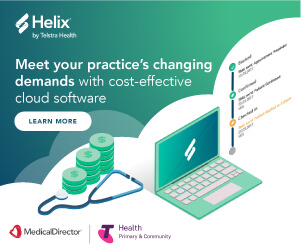Five ways that cloud makes software upgrades simple
If your practice uses on-premise clinical software, then you’ll know that keeping it up-to-date can be a bit of a headache. But did you know that complex software upgrades can be a thing of the past? Read on to find out how.
If there’s one thing that characterises the past two years in the healthcare industry, it’s change. From navigating a pandemic, to new government regulations, to changing technology and consumer expectations, healthcare professionals are under constant pressure to keep track of new requirements.
So, when it comes to adapting to change, your practice’s clinical software needs to be kept up-to-date too. By using the latest software version, you’re not only benefiting from improvements such as security updates and new features, you’re also making sure your practice stays compliant. Telehealth, ePrescribing, Active Ingredient Prescribing and the new Medicare Web Services are all examples of recent changes that needed to be integrated into your software for compliance purposes, or to meet consumer demand for greater convenience.
If your practice uses ‘on-premise software’ – software that’s licensed and installed on computers in your premises – then a software upgrade can be a real pain point. It means you need to maintain in-house servers and have IT support on hand to manage the upgrade and fix any issues that could crop up. A major upgrade can also result in downtime for your practice, which can be difficult to schedule in during busy periods.
The solution to complex and costly software upgrades is to switch to a cloud software solution. Cloud software really just means that your software is delivered over the internet through a subscription or ‘pay-as-you-go’ model. That means you’re effectively ‘renting’ your IT service, which is hosted by the software provider remotely. Let’s look at how cloud can remove the burden of software upgrades for your practice:
- You don’t need IT support: The software provider is responsible for keeping the software up-to-date and secure, adding new features and functionality, and resolving technical issues. When an update or upgrade is required, you won’t need to organise IT support, as it’s all managed for you by the software provider.
- Your data is kept secure: Another benefit of using cloud software is that your data is backed up by premium data centres with access to security measures that are beyond the affordability of most practices. That means your data is safer in the cloud than on a server in your premises, even during data migration and software upgrades. Any security vulnerabilities are quickly identified and rectified by dedicated security resources, keeping your patient information safe and secure.
- There’s no software maintenance: Because cloud software is hosted for you, you don’t need to worry about downloading and installing files or running applications on your computer. All software maintenance and updates are taken care of by the software provider. And, as your needs change, you can easily scale up or down by adding or removing users, rather than needing to buy more software licenses.
- Upgrades won’t disrupt your practice: Cloud software is updated by the software provider remotely, so there’s very little disruption (if any) to a practice. In most instances, you won’t even be aware that a software update is happening, you’ll just see the changes when you next log in.
- It’s easier to stay compliant: Cloud software providers help practices stay compliant more easily by automatically integrating new features and functionality that are required to meet government regulations and industry requirements. All the necessary changes to the software are taken care of by the software provider at the appropriate time, helping you stay on top of important changes.
Software upgrades can be frustrating for anyone without an IT background, or without IT support readily available. But with cloud software, staying up-to-date, secure and compliant is virtually a breeze. If you’re interested in learning more about how much you can save moving to the cloud, check out MedicalDirector’s practice upgrade efficiency calculator.









